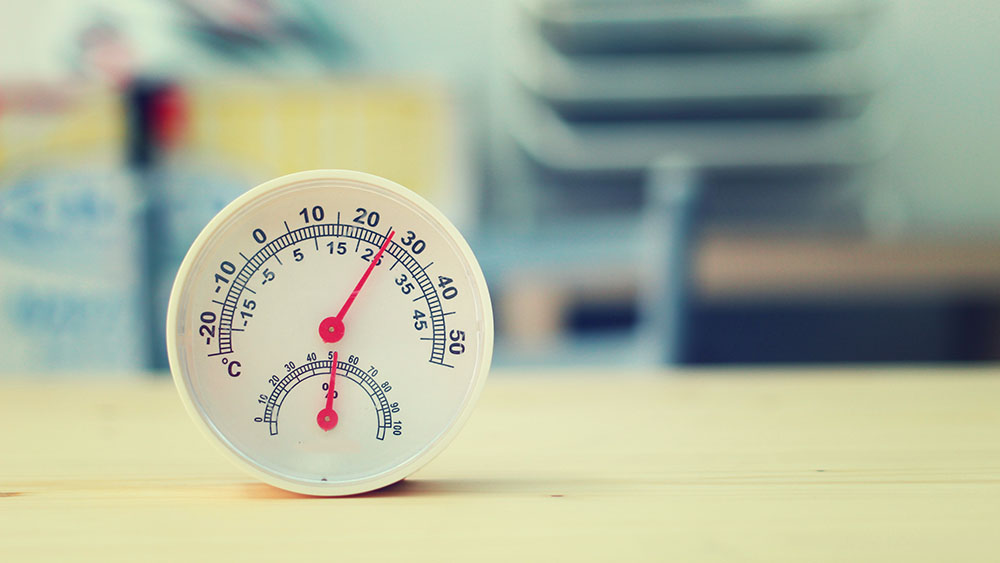
Key Takeaways
- In a closed workspace, carbon dioxide from normal breathing can quickly accumulate, causing dizziness and decreased focus.
- Accumulation of dust, allergens, and pet dander can impact indoor air quality over time.
- Ensuring proper ventilation helps prevent the buildup of indoor pollutants, which can lead to decreased productivity.
After the COVID-19 pandemic, several companies have adopted the hybrid model, where employees split their time between working in the office and working from home. As remote work continues to be part of daily life, maintaining good indoor air quality at home is essential for productivity and well-being.
In offices, primarily due to sick building syndrome concerns, indoor air quality is often carefully regulated with ventilation systems. However, this is something you may have never even thought about and continue to neglect at home.
Let us go over some indoor air quality-related work-from-home tips that can do wonders to boost your productivity and help you keep impressing your bosses!
1. Ensure Proper Ventilation

Ventilation cannot be stressed enough. You might take the HVAC system in your office for granted, but it has been meticulously designed by HVAC professionals, ensuring that a proper office environment is maintained. Temperature levels, humidity levels, airflow, and other intricacies are all considered in this process. This is why working at the office does not feel as hard on the mind and body as it sometimes should.
While working from home, make sure your working space is in a well-ventilated room with windows. Ensure there is fresh air coming in and that the air does not remain stagnant. Keep your windows slightly open or keep your HVAC running at a suitable fan speed to ensure clean air in your workspace.
Stuffy air can make you feel drowsy, and this can impact your work from home productivity.
2. Take Care of Your Carbon Dioxide Levels

Ever wondered what if you do not have adequate ventilation in your room or home office?
The human body is constantly releasing CO2 into the air by breathing, and in a small stuffy room, it can quickly build up to dangerous levels. The brain’s ability to metabolize oxygen is hampered in high enough concentrations, resulting in drowsiness and dizziness. A lack of focus and lethargic behavior follows suit.
Your best choice to make any mini-split, window,
or portable AC smart. Enhance your comfort and savings.

Working from home, you might be tempted to spend as much time as possible within your workspace. This is where you conduct your meetings, you can even have lunch right there, browse your social media, and do other small tasks without needing to get up. This is why it is imperative to follow the steps in the previous section and keep the room well ventilated to prevent any danger from all sorts of indoor air pollution.
3. Keep Your Home Office Squeaky Clean
It may sound quite simple, but when working full-time, you might tend to forget to keep the area around you clean at all times. In addition, if you have kids and pets, keeping it sparkling can become a huge hassle.
One thing you can easily do is to stop people from coming in with their dirty shoes. Dirt can create a mess, and pollutants can escape in the air, impacting the air quality at the workspace. Place a shoe rack on the entrance for this purpose. Moreover, to have clean air in your workspace, regularly vacuum your carpet as it can trap pollutants like mites, pet dander, molds, and dust. These can further be circulated by your HVAC system leading to health problems.
4. Avoid Sick Building Syndrome

Remaining in poor air quality environments for a long time can lead to sick building syndrome (SBS). Even though there are no specific triggers of this condition, the physical signs of SBS are very clear to see. These symptoms can include dry mucous membranes and irritation in the eyes, nose, and throat.
Most commonly, these symptoms are due to high levels of airborne particulate matter and Volatile Organic Compounds (VOCs) – all being a part of indoor air pollutants.
Laundry detergents, fabric softeners, and air fresheners have volatile organic compounds (VOC) that can seriously lower your indoor air quality. Switch to mild cleaners that are free from artificial fragrance to prevent indoor air pollution.
Many common household activities also contribute to indoor air pollution. For instance, cooking on a gas stove can eject combustion particles into the air, drastically decreasing indoor air quality. Other common causes of SBS are:
- High levels of dust
- Tobacco smoke
- Rooms with poor lighting
- The presence of mold or fungus
- Formaldehyde (mostly found in wood furniture and floors)
- Asbestos
- Chemicals in the air from cleaning products
- Pesticides
- Carbon monoxide
- Heat or low humidity
Make sure to take remedial measures if you feel the symptoms of SBS. Also, try to eliminate or minimize the causes where you can.
Follow these tips on how to improve your indoor air quality.
5. Bring In Air-Purifying Houseplants
Houseplants not only increase the aesthetic value but can also clean the air in your workspace. They take in carbon dioxide, release oxygen, and even help get rid of toxins such as formaldehyde, benzene, toluene, and ammonia. These indoor air pollutants are linked to causing headaches and eye irritation and reduce your work from home productivity.
Numerous naturally air-purifying plants include English Ivy, Spider plant, Peace Lily, Aloe Vera, Chinese Evergreen, and more. You can put them on the table or by the window in your home office space to reap the benefits.
In summer, you can also use humidity-absorbing plants that can help remove warmth from the air and cool your workspace.
6. Maintain Suitable Temperature and Humidity Levels

Home temperature is one of the fundamental characteristics of your indoor environment. Even though it has often been cited as a prime factor to be considered for comfort during relaxation time, the influence of temperature and even humidity on work productivity cannot be ignored.
The indoor air temperature affects multiple human activities and physiological responses, such as comfort, work performance, and mental stress. This makes it crucial that you keep the temperature and humidity levels within your home office at an optimum level.
Studies conducted by the Lawrence Berkeley National Laboratory show that performance increases with temperatures of up to 70-71.5 °F, and decreases with temperatures above 73-25 °F. The highest productivity is observed at a temperature of 71 °F.
It would be best to keep a sharp eye on your home temperature to achieve maximum work from home productivity. While the sweltering heat can tire us down, the cold can make us sluggish. You can maintain the perfect room environment with automation by utilizing smart thermostats or smart AC controllers.
Their smart functionality enables you to define your desired temperature and humidity range, which is then automatically regulated by the smart controller. This helps to reduce your cooling and heating bills and allows you to keep your focus on work rather than temperature regulation!
Happy Working from Home
These are just a few best practices that you can follow within your home office to avoid burnout when working from home, improve air quality at work, and keep your productivity levels up.
Be sure to incorporate other measures as well, such as decorating your workspace just like how you would do at the office. You may keep plants on the table or place photo frames. Establishing strict schedules is highly recommended.
It will not be easy transitioning to the new role, but these work from home tips will go a long way in creating the perfect office atmosphere you need to do a fantastic job!








